Canker Diseases - Hardwoods
Chestnut Blight
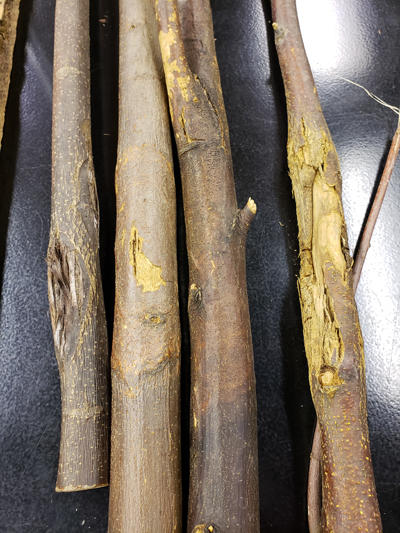
Young cankers caused by Cryphonectria parasitica on American chestnut.
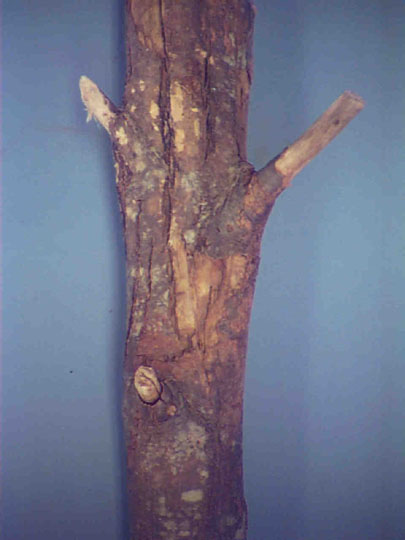
Large canker on main stem of chestnut caused by Cryphonectria.
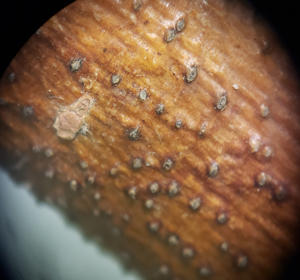
Pycnidia are formed on the bark surface of cankered areas. Pycnidia produce tendrils of asexual spores during wet weather.
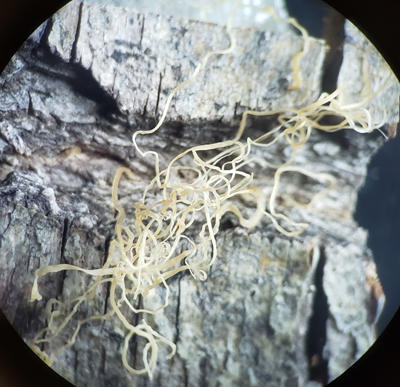
Spore tendrils coming out of pycnidia on the canker.
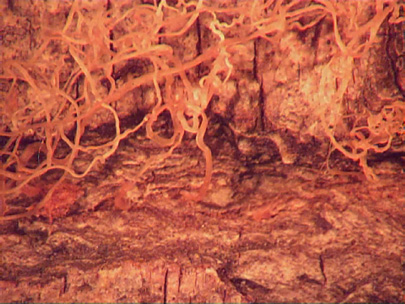
Another view of the spore tendrils (cirrus - also can be spelled "cirrhus") coming out of pycnidia. These tendrils produced during wet weather have masses of asexual spores.

A spore tendril that was mounted on a slide and stained showing very small asexual spores (upper part of photo). A large mass of spores from the tendril is at the lower half of photo. One spore tendril can be made up of millions of conidia.
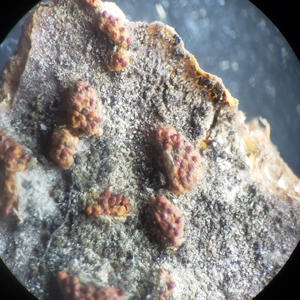
Perithecia of Cryphonectria parasitica embedded in red/orange stroma. Just the tips of the perithecia can be seen. The base of the perithecia is down inside the stroma.
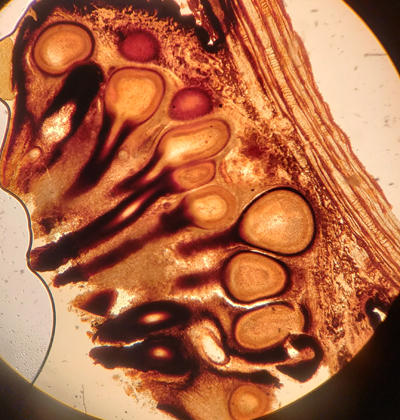
A cross section of a group of perithecia in stroma. You can see the round bases of the perithecia and their long necks. Only the tips of the perithecia can be seen on the cankers
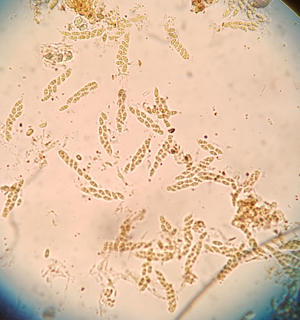
A perithecium of Cryphonectria was broken open to show the asci. Each ascus has 8 two-celled ascospores.
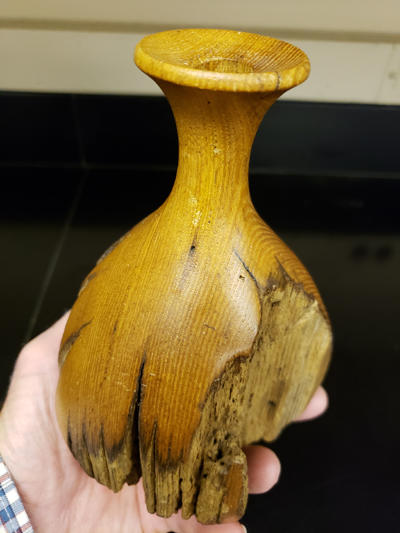
The wood of chestnut has great characteristics and color and was widely used for many purposes. This vase was made from a 150+ year old fence post used at a homestead in West Virginia. Chestnut wood is decay resistant as this fence post shows. Wood workers take these old fence posts and make interesting items that are treasured by people who want to have a remembrance of chestnut history.